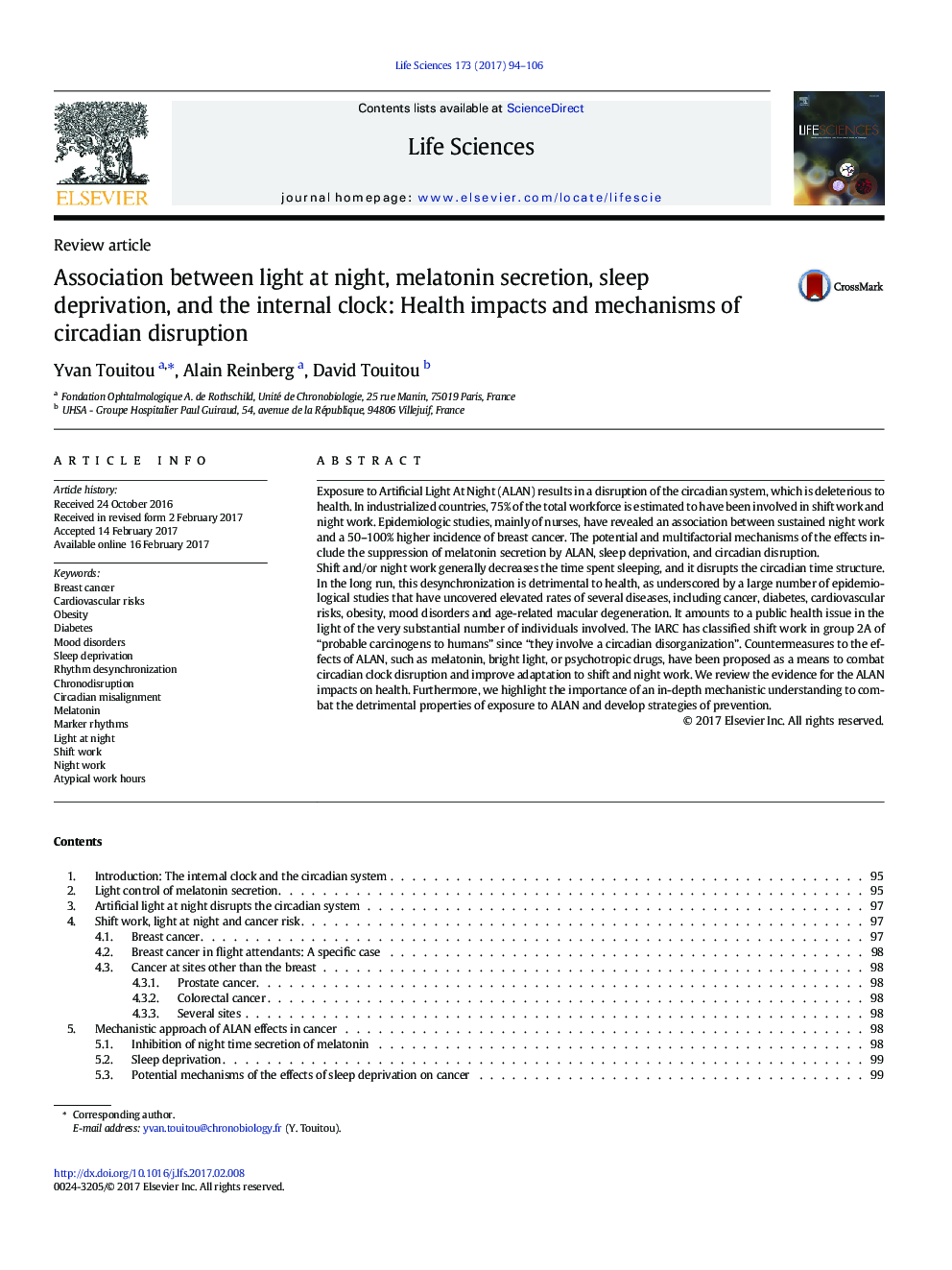| Article ID | Journal | Published Year | Pages | File Type |
|---|---|---|---|---|
| 5557033 | Life Sciences | 2017 | 13 Pages |
Exposure to Artificial Light At Night (ALAN) results in a disruption of the circadian system, which is deleterious to health. In industrialized countries, 75% of the total workforce is estimated to have been involved in shift work and night work. Epidemiologic studies, mainly of nurses, have revealed an association between sustained night work and a 50-100% higher incidence of breast cancer. The potential and multifactorial mechanisms of the effects include the suppression of melatonin secretion by ALAN, sleep deprivation, and circadian disruption.Shift and/or night work generally decreases the time spent sleeping, and it disrupts the circadian time structure. In the long run, this desynchronization is detrimental to health, as underscored by a large number of epidemiological studies that have uncovered elevated rates of several diseases, including cancer, diabetes, cardiovascular risks, obesity, mood disorders and age-related macular degeneration. It amounts to a public health issue in the light of the very substantial number of individuals involved. The IARC has classified shift work in group 2A of “probable carcinogens to humans” since “they involve a circadian disorganization”. Countermeasures to the effects of ALAN, such as melatonin, bright light, or psychotropic drugs, have been proposed as a means to combat circadian clock disruption and improve adaptation to shift and night work. We review the evidence for the ALAN impacts on health. Furthermore, we highlight the importance of an in-depth mechanistic understanding to combat the detrimental properties of exposure to ALAN and develop strategies of prevention.
